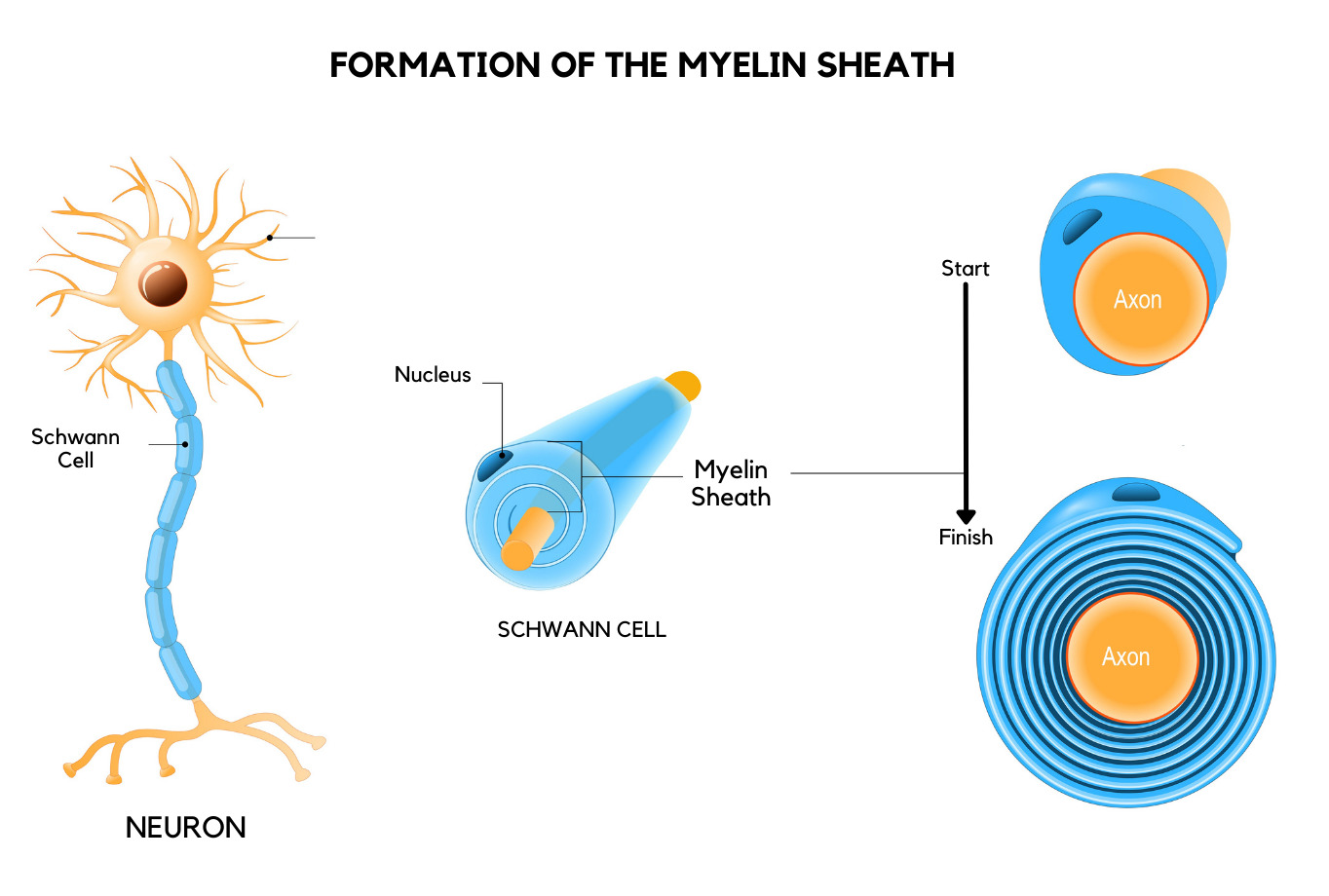As educators, we witness the remarkable progress of our students’ handwriting skills every day. From the careful formation of letters to writing with ease and automaticity, it’s gratifying to see how practice pays off. The key to this improvement lies in a process called myelination, which enhances muscle memory and hand-eye coordination.
What is Myelination?
It involves the production of myelin, a fatty substance crucial for the functioning of neurons in our central nervous system. Neurons, the building blocks of our brain, transmit information through electrical impulses along their axons. Myelin acts as insulation, enabling swift transmission of these signals, much like the rubber coating on a power cable.
When we are born, our myelin content is limited. However, our brain quickly adapts, forming neural networks and coating axons with myelin. This myelination process facilitates essential skills like walking and communication.

Although most of the brain is myelinated by the age of two, myelination continues throughout adulthood as we develop higher cognitive abilities. When we regularly practice a skill like handwriting, the brain recognizes the frequent use of specific neural pathways. Consequently, the neurons in these pathways produce myelin, leading to faster transmission of electrical impulses. This explains why daily practice makes handwriting quicker and easier, transforming a narrow pathway into a well-paved superhighway.
On the other hand, the neural networks we neglect undergo pruning, rendering them unnecessary. Lack of practice results in rusty skills. However, with renewed effort, we can regain those skills and improve.
Perfecting our Practice involves Precision
While practice makes a skill easier and more automatic, it doesn’t guarantee perfection. Consider this example: If you learn to write letters from bottom to top and nobody corrects you, you’ll continue writing them that way, reinforcing incorrect neural pathways. This establishes bad habits that are challenging to break.
To prevent such habits, it is crucial to encourage precision from the start. Explicit instruction provides students with a clear roadmap, guiding them along the correct path. As teachers, it’s essential to supervise students’ writing, offering immediate feedback to correct errors as they occur. By striving for precision, we ensure that students develop efficient writing skills, enabling them to complete their work successfully.
Starting Early is Essential
With writing expectations beginning as early as kindergarten, teaching letter formation becomes a crucial foundation for future academic success. By teaching proper letter formation before students develop their own methods, we prevent the formation of bad habits. This foundational skill serves them throughout their academic careers and beyond.
When students know they are performing a task correctly, their confidence soars. Engaging them in multisensory activities, such as writing letters in shaving cream or using large arm movements to form letters in the air, enhances the learning experience. Tactile and kinesthetic involvement makes letter formation more memorable and enjoyable.
Children’s brains are incredible learning machines, constantly adapting and refining skills. By guiding them to learn correct letter formation, practice with precision, and develop good habits, we can make handwriting an engaging and positive experience for our young learners.
 HANDWRITING HEROES
HANDWRITING HEROES
